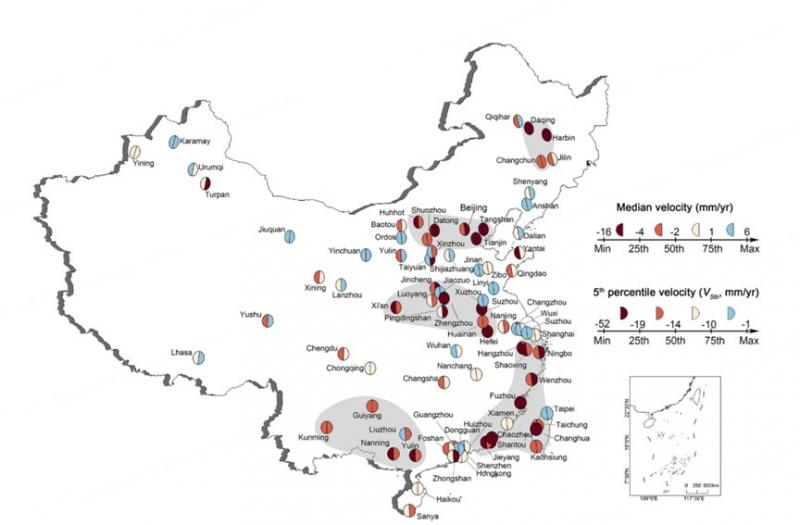The soil on the earth’s surface is not a piece of iron, but soft and elastic, with internal gaps. As the buildings on the ground become heavier, the ground will also be crushed down. This is land subsidence.
With the process of urbanization, a large number of people pour into the city, and there are many high-rise buildings, so urban land is facing a relatively large risk of land subsidence.
Recently, a research team led by Professor Tao Shengli of Peking University published a study in thescienceAfter analyzing the satellite data, the measurement report of land subsidence in various parts of our country was given.
The research paper considered 82 cities with a total population of nearly 700 million. The results showed that 45% of the analyzed urban areas were sinking, with 16% of them sinking at a rate of 10 mm or more per year. However, “our country’s land subsidence problem is no more serious than that of other countries and regions. The authors of the article, researchers Tao Shengli and Hu Xie, said.

Urban subsidence in the country, brown: the subsidence rate is fast; Blue: No settlement or ground rise
In this study, the sinking of coastal cities such as Tianjin and Shanghai is particularly prominent. In Shanghai, for example, the ground in Shanghai has sunk by 3 meters in the past century and is sinking further.
If global sea level rise is taken into account, the results will be catastrophic. If the rate of land subsidence and sea level rise continues, China’s urban area below sea level could triple by 2120, affecting 128 million residents.
Underground, in addition to the subsidence of the ground due to the weight of the buildingwateris also one of the factors that cause land subsidence. The urban population is increasing,lifeThe increase in water demand and overexploitation of groundwater have led to a decrease in the pressure capacity of the ground, exacerbating the decline in the ground.
In response, our country has taken active groundwater protection measures.
Population growth will also lead to an explosion in transportation demand, and vibrations from transportation and excavation of underground tunnels may also be a factor in ground subsidence – 45 millimeters per year near Beijing’s subways and highways.
Subsidence can jeopardize the structural integrity of buildings and critical infrastructure and exacerbate the impact of climate change on flooding, especially in coastal cities, where subsidence can exacerbate sea level rise.
These new results underscore the need for a national response. New satellite measurements are providing new detailed settlement data, butlightIt is not enough to pay attention to it, and the urban planning department needs to make practical countermeasures. We need to learn from this experience to address the more common sinking threat than is currently recognized.
